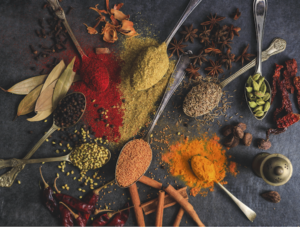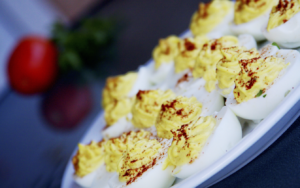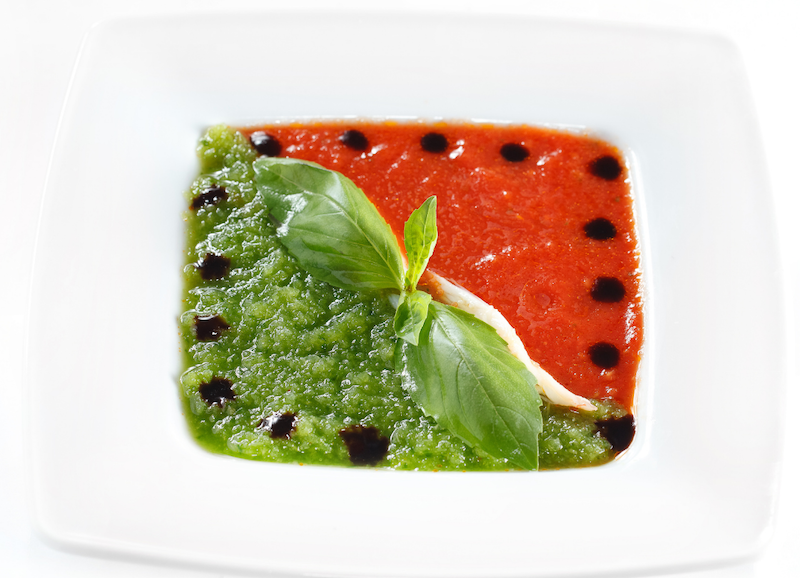Sparking Joy with Food Again
You may recognize the term texture-modified diet from your Speech-Language Pathologist (S-LP) after you were diagnosed with a medical condition such as dysphagia (a swallowing disorder). These diets are often recommended to help make swallowing easier and make mealtime safer by reducing the risk of choking (airway blockage) or aspirating (when food or liquids go into the lungs).
Texture-modified diets may include textures ranging from easy to chew, soft and bite-sized, minced and moist, pureed, or liquidized. These are outlined in the International Dysphagia Diet Standardization Initiative (IDDSI), which is a resource that can support your transition to this new diet. It is important to discuss with your S-LP which texture-modified foods and liquids are safe for you.
Enhancing your food: How to create flavorful and tasty texture-modified meals
For those on pureed and liquid diets, it may feel overwhelming thinking about where to begin or even upsetting knowing you can’t eat your favorite foods anymore.
However, even with the change to a texture-modified diet, there are many ways to prepare and cook safe meals that will spark joy again. Fortunately, many of the common tips on how to enhance flavor and taste with food can be transferred to pureed and liquefied diets that will satisfy your taste buds. Here are some simple-to-follow suggestions that you can use in your kitchen [1]:
- Add aromatics and taste enhancers. Think onions, ginger, garlic, butter, complimentary herbs and spices or infused oils! These aromas will elevate any meal by creating depth and layers to your dish to make them smell and taste great.
- Roast your vegetables before you puree them. Preparing food in this way intensifies the flavour of vegetables and any aromatics you added.

- Season, taste, repeat. Various cancer treatments can alter how food tastes and differs for each person [2]. Make sure you give your puree a taste once you have reached the right consistency for your diet. The amount of seasoning you use regularly may not be enough once it’s blended.
- Use sauces when possible. These can enhance the taste of foods such as meats that can otherwise be tricky to season during preparation.
- Use more flavorful foods or liquids instead of water. Depending on your needs you can use broth to thin the consistency or potato flakes to thicken the consistency.
We eat with our eyes
Take a look at the two pictures below. Which would you rather eat?

The meal on the right looks much more appetizing, yet consists of the same pureed foods on the left. You may have the right texture and the tastiest flavors, but if the dish looks unappetizing, mealtime won’t be so enjoyable! This is a strong reminder that “we eat with our eyes first” and visual appeal plays a significant role in the enjoyment of foods.
Gone are the days when pureed foods are described as unrecognizable meals formed into uniform lumps! With the use of food molds and piping bags, food not only becomes recognizable, but it also looks appetizing too [3]!
As you can see from the picture of mashed potatoes on the right, piping tips aren’t just for baking! Flat tips can turn purees into slices of roast beef or bacon, round tips for making spaghetti or form peas, and star tips can be used to add a decorative element to your dish. Check out Chef Amanda Orchard for inspiration on how to use food molds and piping for some colorful and tempting pureed meals!

Ready to spark some joy in your next texture-modified meal?
The kitchen has always been a space for experimenting and creating. Chefs don’t just come up with the perfect recipe instantly. There is a lot of trial and error that comes with recipes! The great part is you don’t have to reinvent the wheel; there are tons of great recipes readily available for you to try.
Maybe there was a tip or two that resonated with you that you would like to try at home or maybe all these tips are overwhelming – that’s okay too! If you’re not quite ready to get in the kitchen, there are many resources available to inspire you and allow you to explore what other members of the dysphagia communities have tried already.
Have a different tip or trick to share that has sparked joy with food again? Send us a message at: info@trueanglemedical.ca
Dysphagia Resources
Cookbooks:
- Beyond the Blender
- Dining with Dysphagia: A Cookbook
- Essential Puree: The A to Z Guidebook
- What to Eat During Cancer Treatment
Blogs/Recipes:
- Oak House Kitchen: Tips and recipes such as, “Snacks From Around The World”
- Yvonne McClaren – Real Food Dysphagia Advocate: Tips and recipes such as, “How to drink Bacon”
Social Media:
Disclaimer: The information here is meant to support people with dysphagia and their friends and families. It is not in any way meant to replace treatment or consultation with medical professionals. For more information about your individual needs, speak to the medical professionals on your care team.
References
- Tips for enhancing the flavour of texture modified foods. (2019, April 12). Texture Modified Food Solutions. Retrieved December 19, 2021, from https://texturedfoods.com/blog/tipforenhacingflavour
- Taste changes. (n.d.). Canadian Cancer Society. Retreived February 27, 2022, from https://cancer.ca/en/treatments/side-effects/taste-changes
- Farmer, S., Poirier, C., & Tuan, C. (n.d.). Bon appétit! Enhancing the enjoyment of texture modified food. Selkirk Mental Health Centre. Retrieved December 19, 2021, from https://www.alzheimer.mb.ca/handouts/2C%20Bon%20Appetit!%20Enhancing%20the%20Enjoyment%20of%20Texture%20Modified%20Foods.pdf





